Submicron Particulate and Aerosols

What is Submicron Particulate?
Submicron particulate is particulate smaller than 1 micron. For context, the average strand of hair is 70 microns in diameter. Submicron particulate is highly respirable and a well-documented cause of asthma and heart disease. It passes through natural barriers to produce systemic oxidative stress and inflammation. Aerosols are suspensions of particulate or liquid in air. Aerosol particulate usually has a diameter in the submicron range.
How is Submicron Particulate Removed?
Submicron particles are efficiently removed by two very different systems, each proprietary to Tri-Mer Corp.: Cloud Chamber Wet Scrubber, and UltraCat. The latter of these is the best available technology where submicron particulate co-exists with hot gases. (Operating range is 350° to 950°.)
Cloud Chamber Scrubber is a field-proven Tri-Mer technology. It works by passing the contaminated gas stream through a chamber containing a scrubbing cloud of ultra-dense, charged water droplets that rapidly interact with the particles in the process stream. When a particle and droplet pass within 20 microns, electrical forces pull the particle into the droplet; droplets collect particles as they interact, and fall into the sump.
Particles between 0.1 and 2.5 microns are most often removed at efficiencies of 99% and often higher. Even particles as small as 0.01 micron can be effectively treated after controlled agglomeration growth in the system’s pre-conditioning section.
Cloud Chamber Scrubber has a pressure drop as low as 1.5 wg across the system, and requires just 600 watts of power. For many applications, it can accommodate inlet mass loadings as high as 2,000 mg/m3, reducing mass emissions to below 5 mg/m3. This is equivalent to 0.9 grains/ft3 reduced to 0.002 grains/ft3.
This form is the fastest way to get in touch with us.
A more detailed form, located here, will tell us what we need to generate a detailed quote.






